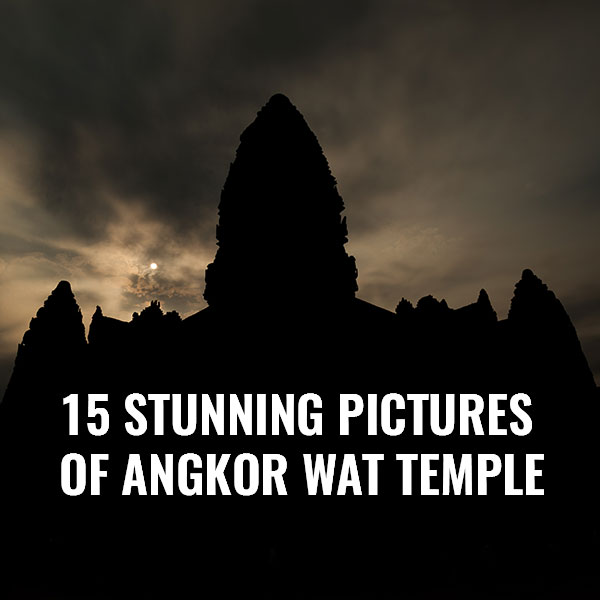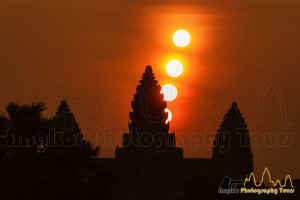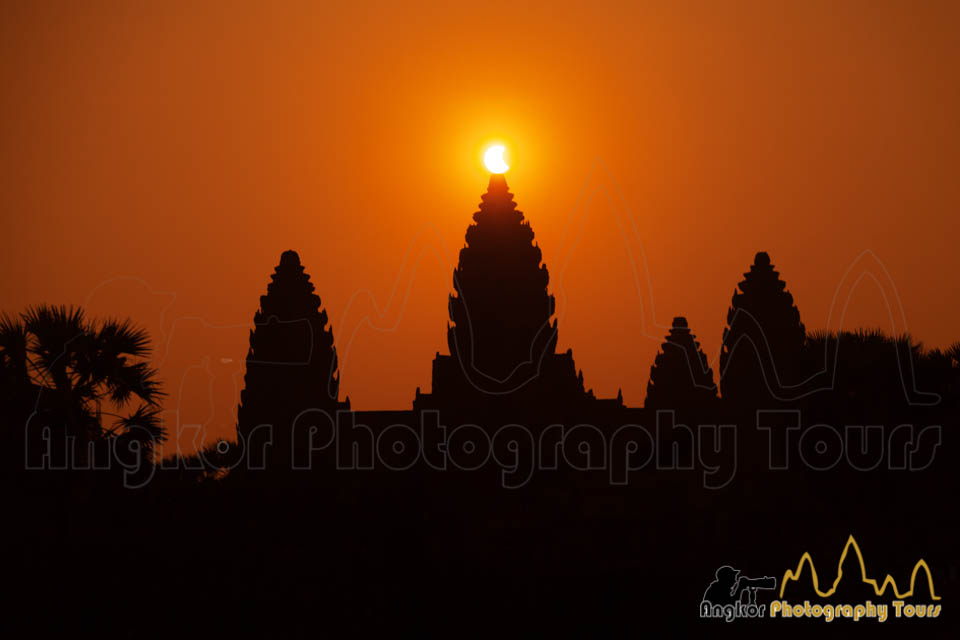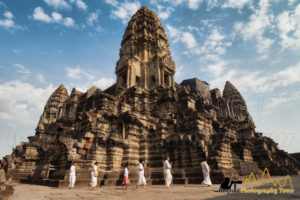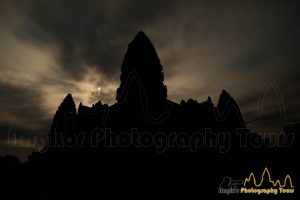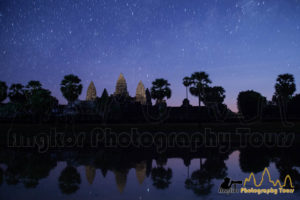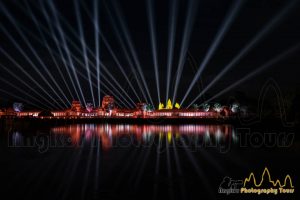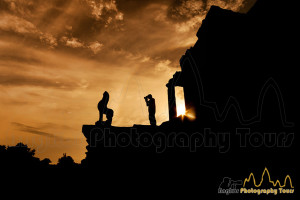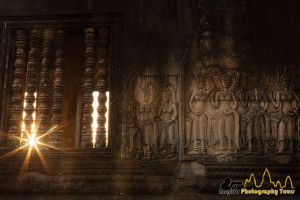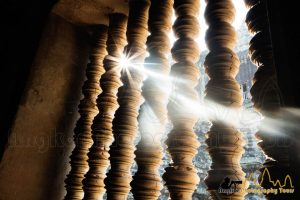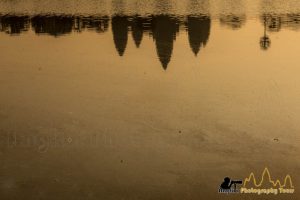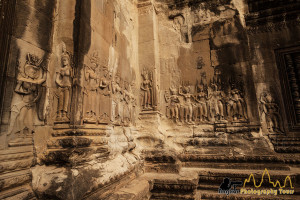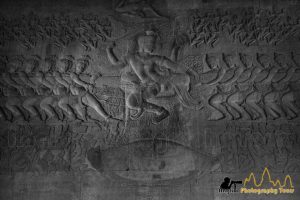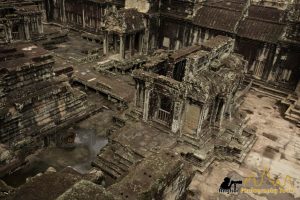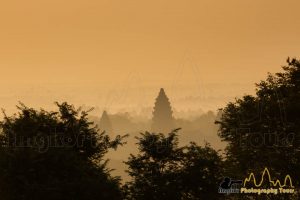Above is Angkor Wat captured during the spring equinox of March 2016. This timely event occurs twice a year around the 20th of March and September. Getting this shot is of course highly depend on the weather and the chance to have a cloudy sky is particularly high during the month of September. In this picture we blended 4 shots taken few minutes apart with a tripod.
On March 9th 2016, a special set conditions were gathered for an unique Angkor Wat sunrise: a partial eclipse of the sun and the near alignment with the central tower. For few seconds only we could see the sun masked by the moon suspended above the central tower.
The second level of Angkor Wat is where you stand the closest to the five towers and to the central sanctuary called Bakan. From the corners, only three of the five towers are visible. On the first picture, during Vesak day, a Khmer family was walking around the temple which give an interesting human dimension. The second picture, much more dramatic, from another angle, allow to focus on the silhouette of the three towers.
Due to restrictions of the the opening hours, it is only possible to shoot Angkor Wat under the stars between the month of December and February. As it is also the peak season for tourism in Cambodia so many people are on site early and it is quite challenging to avoid the light pollution coming from torch lights and smartphones during long exposure shots. If you look carefully in the picture below, 3 out of 5 towers are lighting up on this shot thanks to random torch lights.
In an there situations, artificial lighting can be helpful to do light painting . This used on the second picture to illuminate and create light effect on one of the naga balustrade of Angkor Wat.
The only opportunity you will have to take some night pictures of Angkor Wat with laser lights are usually during the three days of Khmer New Year which happens every year in April. However this picture was taken in December 14th, 2017 during a light show to celebrate of the 25th anniversary UNESCO world heritage status of Angkor Wat temple.
Sunrise or sunset in Angkor Wat provide some opportunities for silhouettes shots if you are standing on the right location at the right time. In some instance, rays of light can go through the windows and create unique pictures.
Instead of aiming at eye-level for the classic reflection shot at Angkor Wat, pointing down the camera can give a great reflection shot especially at the golden hour.
One of my favorite group of devatas is located on the second level of Angkor Wat (you can count as many as 17 on this picture). It is unfortunately behind a scaffolding since 2016 due to restoration of the tower above it.
This 49 meters long bas-relief depicting the churning of the ocean of milk is one of the most famous in Angkor Wat. You can see the demons (asuras) and the gods (devas) pulling the snake Vasuki fighting over the elixir of immortality. The snake is wrapped around mount Meru used as a stick. Vishnu under the form of his avatar the turtle is helping to stabilize the mountain. Due to its position the bas relief has a strong casting shadow. The solution for this shot was to use light painting, and blend multiple pictures together.
Archaeologists often describe the temples of Angkor as a skeleton as the many wooden structures that did not stand the test of time. On this shot of Angkor taken from the top of the main tower, one can imagine what the temple was like at its heydays with ornaments and wooden doors.
Angkor Wat emerging from the surrounding misty jungle in the morning. This picture was shot from Phnom Bakheng one of the three hills around Siem Reap. To get this shot we recommended to use at least a 300 mm on a full frame sensor.
- Meak Bochea: Celebrating Buddha’s Final Teaching in Siem Reap Cambodia - February 14, 2025
- Angkor Wat Marathon - June 22, 2024
- Timelapse calculator - June 22, 2024
